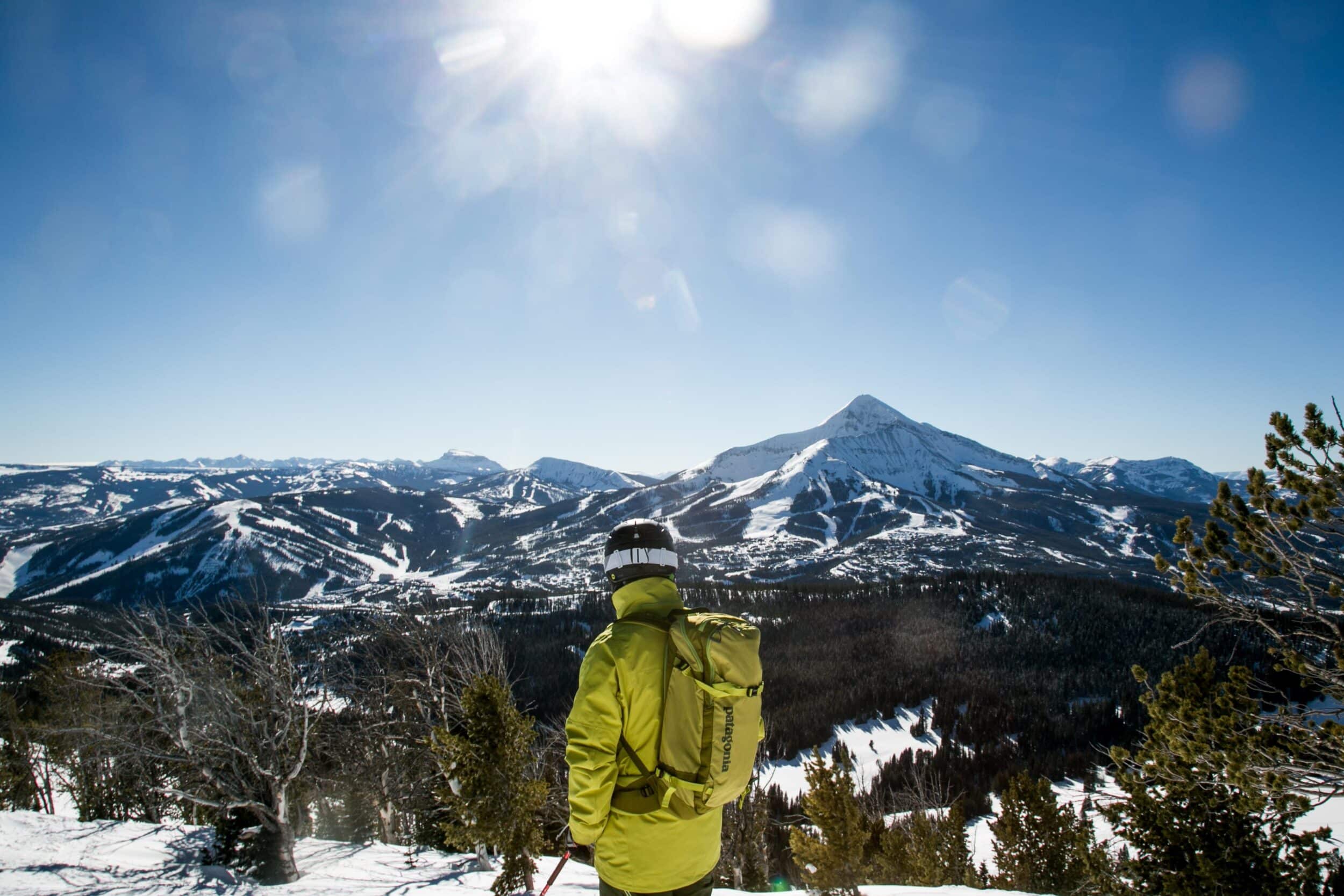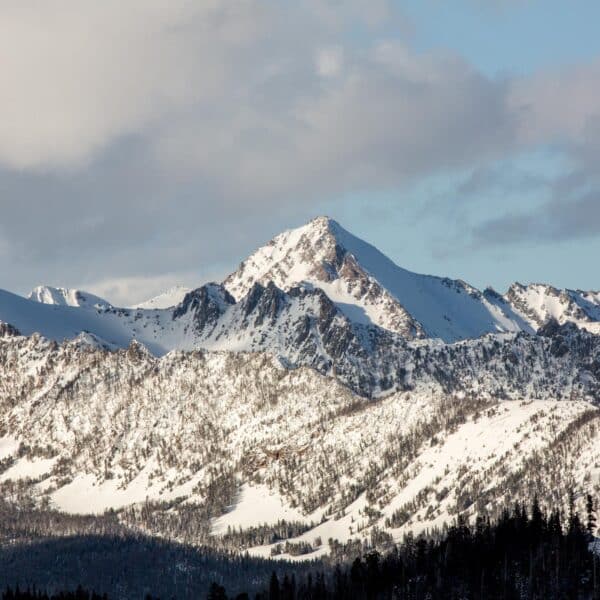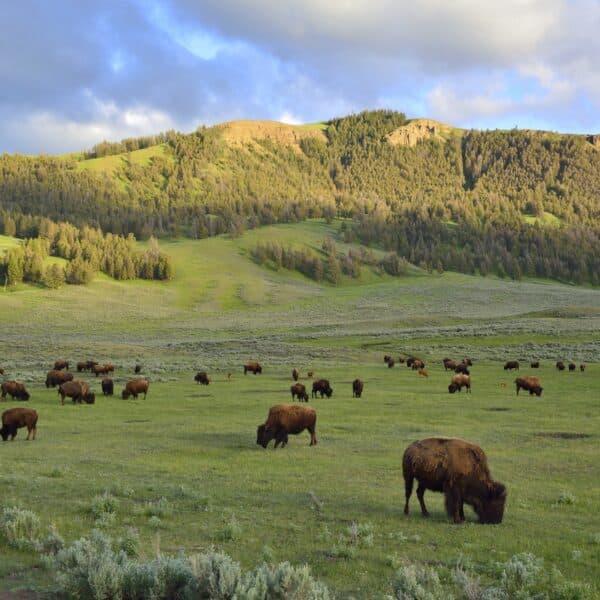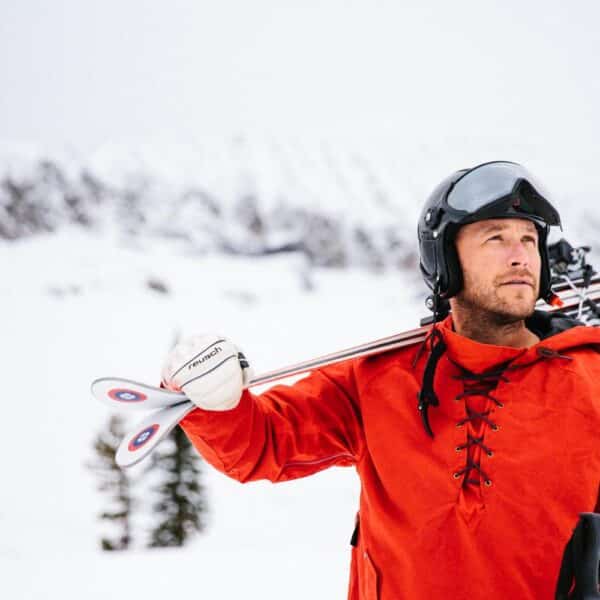Big Sky, Montana

Backcountry Skiing 101
Backcountry. Ski touring. Alpine touring. Earning your turns.
Whatever you call it, more folks than ever are seeking fresh snow, new terrain, healthy exercise, and fewer crowds beyond the boundaries of ski resorts. And while climbing for turns isn’t for everyone, the barriers to entry have never been lower. Today’s lightweight backcountry gear maximizes comfort and efficiency while skiing uphill (called “skinning”), and sacrifices little in downhill performance (so you can shred like you always do). Backcountry education and information is also now readily available: guides and educators have developed safe, fun programs to introduce new users to the sport.
But it’s not all high fives and face shots. As the past two years have made tragically clear in Southwest Montana, the backcountry can be a deadly playground. Unstable snowpacks are endemic to this part of the Northern Rockies—and beyond. Thirty-six people died in U.S. avalanches last winter. Before you consider heading out into avalanche terrain there are skills to master. There’s no ski patrol out there. And when there’s no guarantee of help, self-sufficiency is key. But if you’re up for learning and have a modicum of fitness, the backcountry holds a lifetime of adventure and untracked snow. Here’s how to get started safely.
Do Some Research.
Before you invest your cash in new gear, talk with a reputable local shop, guide, or experienced backcountry skier about what you really need.
Read Everything.
A great primer is Backcountry Skiing: Skills for Ski Touring and Ski Mountaineering, by guides Martin Volken and Margaret Wheeler. Another is the descriptively-named Staying Alive in Avalanche Terrain, by Bruce Tremper. There are also a number of excellent introductory avalanche awareness tutorials online, including Know Before You Go, (kbyg.org). Practice on Safe Terrain. Try skinning where there’s no avalanche risk— inbounds on a groomer. Many ski resorts, including Big Sky, provide designated uphill skiing routes. Wear a pack, break-in your gear, and get used to how everything works in a controlled environment. Later, head to a beacon park (there’s one on the hill and one in town) to get to know your avalanche transceiver.
Prepare Every Time.
Never enter the backcountry—even from a resort gate, or mellow trailhead like Beehive Basin—without a partner, avalanche safety gear (transceiver, shovel, and probe), and the practiced ability to use it. Take an eight-hour avalanche rescue course, and make your partner take it—they are your rescuer, after all.
Hire a Mentor.
Sign on with an experienced guide who can provide learning moments, keep you safe, put you in the best terrain and snow, and let you focus on the experience. Be honest with your guide about your abilities and goals, and don’t be afraid to ask for help.
Continue the Education.
If you plan to backcountry ski without a guide where avalanches are possible (on or adjacent to slopes steeper than 30 degrees— so most everywhere in the mountains), take a 24-hour Level 1 Avalanche course from a qualified course provider approved by the American Avalanche Association (americanavalancheassociation.org). This is a critical first step in understanding how to avoid avalanches, travel safely in the mountains, and find great skiing.
Keep at It.
The rewards of backcountry skiing are commensurate with the challenges!
Drew Pogge owns Big Sky Backcountry Guides and Bell Lake Yurt (bigskyback country.com), serves on the board of the American Avalanche Association, is former Editor-in-Chief of Backcountry Magazine, and explores remote peaks around the world on skis. He lives in Bozeman with his wife and a real-life powder hound named Waylon.

Big Skiing, Small Crowds At Montana’s Big Sky Ski Resort
For the past few years, Montana’s Big Sky Resort has been the buzz of the ski travel industry. New hotels, amenities, dining and retail have been added, flights to the Bozeman gateway have increased and the resort is two years away from wrapping up a massive, decade-long infrastructure improvement plan called Vision 2025. That includes tens of […]

Where to Travel in 2022
For a certain subset of the population, the luxury western ranch trip has become a near-obligatory rite of passage in recent years. Montage is just the latest to seize on this opportunity—on December 15, it officially opened the doors to a sprawling new resort in Big Sky, Montana, becoming the first luxury ski hotel to ever be built in […]

Bode Miller’s Tragic Year
Montage International, the hotel and resort management company behind the brand, Montage Hotels & Resorts, will open a resort with a hotel and residences in Big Sky, Montana.